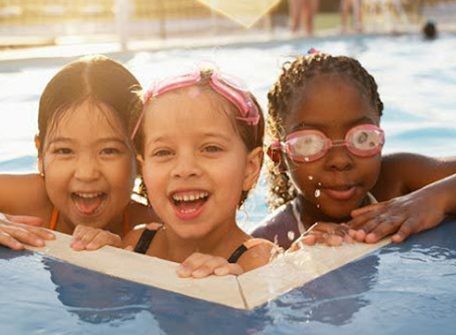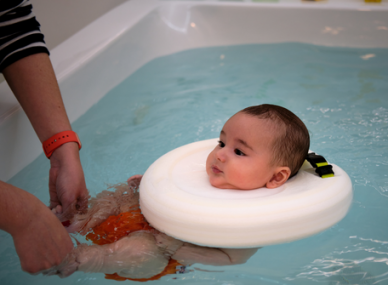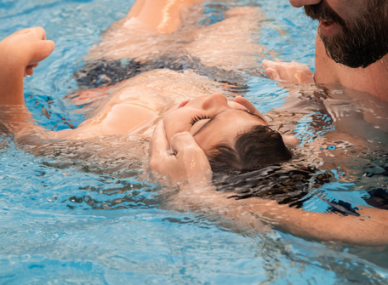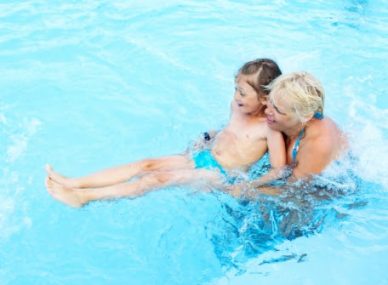Living with any disability and health condition is challenging, especially for children who need help with physical therapy. It can be difficult for both parents and their children to overcome difficult situations because children are not patient as adults and don’t possess the strength and limitations as adults do. Due to these reasons, physical therapists recommend hydrotherapy, a water-based exercise to help improve a child’s physical function and wellbeing.
What is Hydrotherapy for Children?
Hydrotherapy, also known as aquatic therapy, is the best therapeutic intervention for children with a disability. It is an alternative to land therapy that helps children improve strength, balance, endurance, coordination, range of motion, flexibility, and walking goals. Hydrotherapy is a form of physiotherapy that brings about several therapeutic effects. This therapy is a great way to provide fun and stimulate your child’s recovery. With this therapy, children with disabilities do not need to be able to swim because the therapy sessions ensure your child’s safety all the time.
What Else is Hydrotherapy Used for?
- Neuromuscular disorder
- Orthopedic Injuries
- Neurological impairments
- Cardiopulmonary disorders
- Sensory processing disorders
How Does Hydrotherapy Work?
Hydrotherapy pools are different from regular swimming pools as they are warmer and involve unique exercises. The temperature of warm water is between 33–36ºC. The warm water assists the child’s body and relaxes muscles, which helps heal injury and promotes body functions such as respiration, blood circulation, and pain relief. Hydrotherapypool exercise is increasingly helpful, especially for children with cerebral palsy, and it helps children who have permanent movement disorders such as weak muscle, stiff muscle and tremors.

Your child will not need to know how to swim because there are specific exercises in hydrotherapy based on the child‘s age, physical condition and cognitive abilities.
What Does Hydrotherapy Involve?
The physiotherapist will first diagnose the underlying problems of your child on dry land. After that, they will tell you about the treatment to evaluate the safety and suitability of your child within the pool. Many different treatments are available for children depending on their conditions and symptoms. Some treatments and exercises are below:
- Proprioceptive exercise
- Balance exercise
- Soft tissue treatment
- Movement exercise
- Core stability exercise
- Strengthening exercise
- Relaxation exercise
- Sports injury rehabilitation
- Mobility rehabilitation
- Stretching Programs
What Makes Hydrotherapy Effective?
Following are the four key features that make hydrotherapy effective.
1. Buoyancy
When entering the warm water, the child’s body weight is carried by the water. This sensation is referred to as a weightless feeling. As the water carries the child’s weight, they can strengthen their muscles without feeling the pressure of hard work. The support of the water also helps in maintaining balance and reducing pain.
2. Water Resistance
The water creates resistance, building up strength in children and ensuring muscle and movement resistance.
3. Hydrostatic Pressure
The water pressure on the body helps children free tight muscles and less swelling in arms, hands, feet, ankles and legs.
4. Water Temperature
Water temperature is very important for hydrotherapy. The warm temperature eases the mind, relieves anxiety, stress, relaxes the muscles and gives a feeling of tranquility.
Hydrotherapyplays an integral part in supporting children with disabilities. The therapy helps your child stay healthy and happy by improving their physical and mental capabilities!
Benefits of Hydrotherapy
Hydrotherapy offers many benefits to children with disabilities and other health conditions. Some of them are as follow:
● Increases Range and Strength of Motion
Hydrotherapy works as an excellent environment for children who have suffered an injury such as broken leg and immobility of joints. Their disability causes swelling and a lack of strength in the muscles, so the water resistance improves balance and coordination, which is required after an injury.
● Improves Respiration
Hydrotherapyis also beneficial for those children with speech disorders. The exercise of holding breath while taking the arm up and down in the water helps children improve breathing control for speaking.
● Improves Developmental Milestones
Developmental milestones such as crawling, walking, jumping and rolling can be achieved by practicing hydrotherapy. For example, hydrotherapyimproves the balance and mobility of children with cerebral palsy and autism. Children learn to roll and walk in the water because these activities are more accessible than land activities. This will also help increase bodily functions and acquire developmental milestones.
● Enhance Social Skills and Self-Confidence
Hydrotherapy effectively improves social and motor skills and reduces anxiety levels while increasing confidence. Kids find fun while playing and performing exercises in the pool. They enhance their competitive play and learn social skills such as sharing toys, interacting and speaking to those who have anxiety. These all result in making them confident and increasing their social interaction capability.

● A Fun and Safe Environment
Besides just therapy, hydrotherapy is a fun game. Hydrotherapypromotes an entertaining feeling compared to a clinical office setting that kids often find intimidating. Like many other exercises, this therapy also helps in reducing stress and tension by empowering your child both mentally and physically.
Other Things to Consider
Before starting hydrotherapy, you need to seek a medical practitioner’s advice. Discuss your child’s medical conditions and concerns with the physiotherapist because any condition can affect your child’s safety in the pool or the exercise types that your child needs to do.
For instance, hydrotherapy can impact their abilities if children are allergic to chlorine or have any epilepsy, diabetes, or cardiovascular disease.
Remember your child will need a hydrotherapysession in a pool that is accessible. If your child uses a wheelchair, he might need a hoist or water wheelchair to get into the pool. Moreover, if the child has any mobility restrictions, he/she might need to enter the pool using a ramp with handrails. In addition, the water level should be according to your child’s age; it should be more accessible to him.
Wrapping Up
Children love bath time – the bubbles, running water; however, if their disability prevents them from feeling the sensation, then hydrotherapy is the best option for them to improve their condition. But before taking this therapy, consult with the therapist to make the best use of hydrotherapy.
In conclusion, we hope you now understand the benefits of hydrotherapy on the physical and mental health of your children.
Our hydrotherapy physiotherapy professionals at Hope AMC in Dubai help patients with discomfort to exercise in a safe, self-regulated, and temperature-controlled pool setting. Swimming consistently helps our patients enjoy significant, long-term advantages by altering tone and joint range of motion prior to treatment on dry ground.
Contact us for specialist Hydrotherapy Services at our state-of-the-art physio hydrotherapy facility for your child or young adult.





